One of Picasso’s most famous and popular images is his lithograph of a dove as a symbol of peace. But the dove was Matisse’s. Literally.
Matisse and Picasso first met at the salon of the American patroness and writer Gertrude Stein’s in the early 1900s. At the time they were rivals for both her affections and those of the modern artists of Paris. Picasso’s followers once plastered the walls of Montmartre with anti-Matisse graffiti like “Matisse drives you mad!” and “Matisse does more harm than war!” Matisse responded by using the term “Cubism” to mock the art of Picasso and his followers, a label that would, of course, stick.
As they grew older, they grew closer. By the end of World War II, the old rivals had truly become great friends. Matisse was now almost eighty, nearly bed-ridden and living in apartments in Vence, a town close to Nice. His wife, Amelie, had recently divorced him; his children were grown with children of their own. His bedroom and studio were filled with birds and plants to keep him company and inspire him.
Picasso, along with his mistress, Francoise Gilot, was a regular visitor whenever they came south. They often exchanged paintings and even exhibited together. Matisse kept a Picasso over his bedroom’s mantelpiece and Picasso displayed his Matisses in his studio. Picasso, who was eleven years younger, would bring recent paintings to Matisse for comments. An engraver who did work for both of them said Picasso thought of Matisse “as an elder brother.” Matisse thought of his rival as “the kid.” Their arguments continued, but more like sibling rivalry as they sat alone at the pinnacle of the art world.
When Matisse took on his last great commission — the chapel of Vence — he emptied his living quarters so he could cover the walls with brightly colored cut-papers and not be distracted. He bid a sad farewell to the plants that one can see in so many of his paintings. His exotic pigeons were sent to Picasso.
In 1949, Paris was chosen to host the “World Congress of Advocates of Peace.” The World Congress was a pro-Stalinist organization, convinced that the capitalist forces of imperialism were the greatest threat to global peace. Picasso had recently joined the Communist Party so the French writer and Communist Louis Aragon (a friend and later biographer of Matisse) came to Picasso’s studio to find a picture to illustrate a poster for the conference. A lithograph of a dove he saw there seemed an ideal choice. The Congress liked it so much they made it their organization’s symbol. The poster was popular with leftists for decades. By coincidence, Picasso’s daughter with Francoise Gilot was born the same day as the poster hit the streets of Paris. Because of this, they named her Paloma (“dove” in Spanish).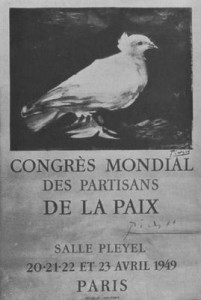
Picasso responded to its popularity and his growing fascination with doves with many versions in subsequent years. Matisse was always dismissive of Picasso’s flirtation with Communism. [After the Soviets invaded Hungary in 1956, Picasso left the Party.] For his part, Picasso never could understand how Matisse, an atheist, could work on a commission for a nun’s chapel.
When Matisse died in November of 1954, Picasso was, as the French say, désolé. He couldn’t paint for days. When a friend called on him, he saw him staring out a window, murmuring “Matisse is dead. Matisse is dead.”
Years before he had said, “When one of us dies, there are things the other will not be able to say to anyone else again.” As a final homage to his lost friend and brother, Picasso painted the most Matisse-like paintings of his career. The series show an open window looking out on the Mediterranean surrounded by doves. Matisse’s doves.

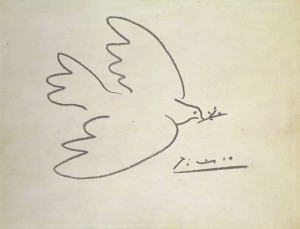
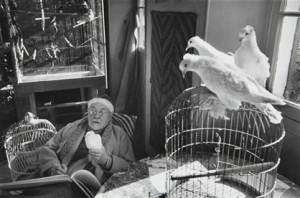
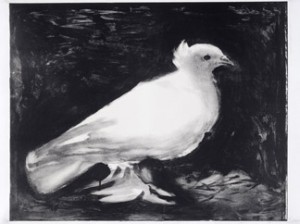
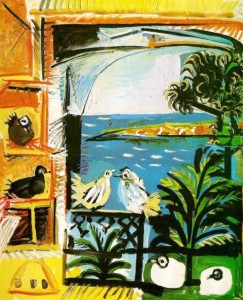
Thank you for a lovely story. I’ll never look at the work of either man again in the same way.
Pingback: The Unwanted Gift: Picasso and Matisse | Lewis Art Café
Pingback: Duncan’s Dog meets Picasso | Lewis Art Café
Pingback: A visit to Matisse’s ‘crowning achievement’ | Lewis Art Café
I just read your piece about Picasso and Matisse which moved and touched me very deeply. I was left pondering how sometimes art speaks about the heart of the artist more so than do his (her) political or religious statements. I imagine that their friendship was more real and tangible than their stances on world issues. Thank you for your beautifully written story. I look forward to reading more of your postings.
thank you